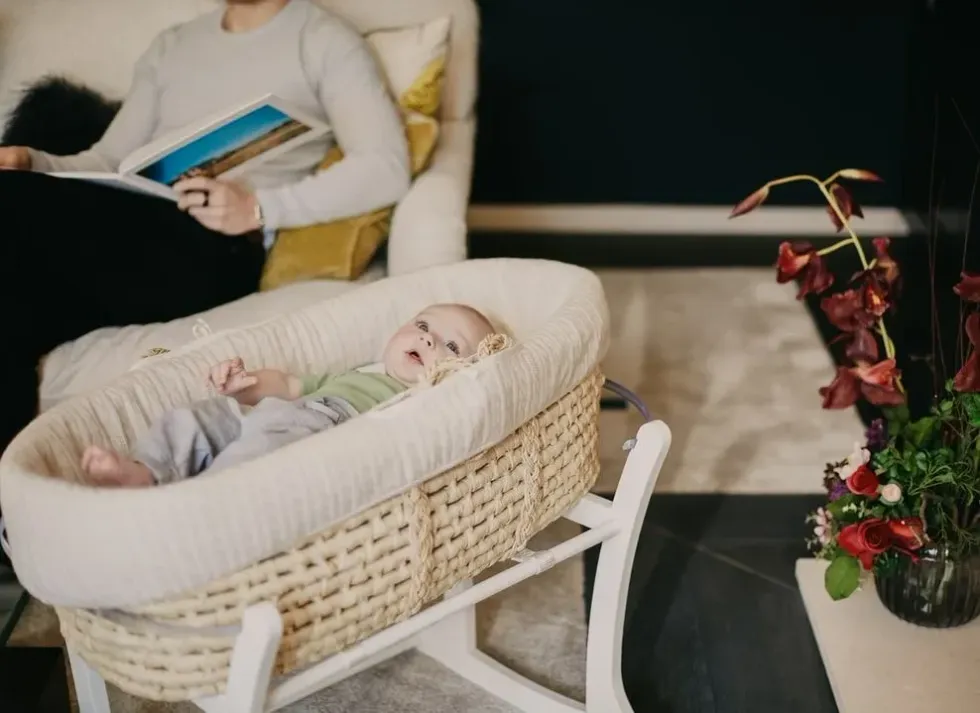Does the idea of teaching your little one to sleep through the night sound like bliss?
Once your baby can muster a few hours of sleep together, you might be wondering about sleep training and how to begin. You may have even heard people mention one popular strategy, the pick up put down method.
But what exactly is the pick up put down method? In essence, it involves many trips to visit your baby in their crib and leaving them once they are settled. The technique first came from Tracy Hogg's renowned parenting book 'Secrets Of The Baby Whisperer' and steadily picked up popularity as an effective means of sleep training.
Read on to find out when you can begin this form of sleep training and the things that need to be in place so that you and your little one can finally catch up on those sacred z's.
What's more, if you're interested in additional parenting articles, do take a look at our guide to sleep regression at different ages or what to do if a 3-year-old's behavior is out of control.
The Pick Up Put Down Method
First things first, before you get started, many parents are quick to ask, what is the pick up put down method, and does the pick up put down method actually work in getting a baby to sleep? In sum, the answer is yes! But like many things, it requires practice and plenty of it.
The pick up put down method entails your regular evening routine with your baby. Perhaps bath time, book, then bed, or whichever pattern you follow. After you've completed the usual steps, you then put your baby down to sleep in their crib.
Ideally, at this point, your baby would be relatively drowsy and calm, but still partially awake. Once they are in their crib and provided they are not crying or fussing, you can leave the room. The idea is that they learn to fall asleep by themselves.
If your baby starts crying, do not race back to them right away, instead, stop, wait and listen closely. Here the overarching aim is to try and assess if they are whimpering and can settle themselves or if they are awake and crying to a level that requires your intervention to soothe them.
If your baby is the latter and requires you to return, you can then go and pick up your baby. Comfort and cuddle them until they are calm.
This is known as the 'picking up' process of the pick up put down baby sleep strategy. Once they have settled but still awake, the next step is to put your child back down in the crib. This step is the put down component of this bedtime training process.

The cycle then continues by repeating all of these steps until your baby is asleep.
As you can imagine, it takes a great deal of time and patience to master this strategy and for many parents, it can be frustrating. What's important is to do your best to stay calm and relaxed once you return and pick up your baby again.
Try and make sure, where possible, you as a parent have had plenty of rest and sleep before giving this method a try, as in the start, it may take up to two hours of practice.
It's worth keeping in mind if you have a deadline approaching, such as returning to work, the pick up put down sleep method will take several weeks of training beforehand.
Can You Use The Pick Up Put Down Method For Naps?
Yes, you can use the pick up put down sleep training method for naps with your baby. Just follow the same steps as the evening pick up put down bedtime routine and repeat the cycle.
It's a good idea to have the nap scheduled within your daily routine for it to work well. You can also use a key phrase for when you put them down the first time, such as 'it's nap time now'.
Then, if they start to wake up you can repeat this phrase before picking them up again. This sleep training method can take as little as five days to become effective, or up to three weeks in some cases.

Other Sleep Training Methods
Many parents wonder what's the most effective sleep training method, and the answer is that it is likely to be the one you stick with and remain consistent with applying that works for you and your baby.
Do bear in mind it's natural for babies not to have a regular sleeping cycle until they are around 6 months old, and this the age where babies begin to sleep through an entire night.
Some people manage to start sleep training at about 4-6 months; however, speak to your pediatrician to decide the best time to begin for you and your baby.
Ultimately, remember there's no one right or wrong way to get your baby to sleep. The pick up put down method may be a saving grace for many babies and parents, but not all of them.
Do bear in mind this sleep training method may take longer than others; however, it is a gentle one.
The most effective approach is the one you feel most comfortable using, the one which seems most natural to you, and the one you can stick out consistently with your child. Baby sleep methods work best when everyone is on board with the training, be it grandparents, close relatives, or your partner.
Another popular sleep training approach is the Ferber method, developed by Dr Richard Ferber. This is also a check and console method, using timed intervals that gradually increase in length, where you ignore any cries in the meantime.
It's also referred to as the 'progressive waiting approach'. You can soothe your baby verbally or give them a gentle rub when you return at the right time, but you shouldn't pick them up.
The visits back to the crib should only be around one to two minutes long. The idea with this method is that your child will begin soothing themselves to sleep should they cry and wake up.
You may have also heard of the cry-it-out method of sleep training. In this process, you leave your child in the crib to settle themself for a long time, even if they are crying.
You leave the room and only return to the crib to provide a feed.
It's also known as the extinction method, as the idea is you want to extinguish your baby's behavior (crying) by not reacting to it, saying good night, settling them down to fall asleep, and then leaving.
It's certainly one of the more controversial bedtime sleep methods, and even many experts disagree on what should be done next, depending on the baby's age. Some suggest leaving the baby the whole night to cry unless you have a feed planned, while others recommend visiting after one or two waking up occasions.
Another method of sleep training is the chair strategy. In this gentle approach, you follow your regular soothing bedtime routine with your child.
You then place a chair near to your baby's crib and remain in it until they fall asleep. Each night your edge the chair further and further away from your child's crib until you leave the door and out of the room.
If they wake up you return to the chair and wait until they are drowsy and fall asleep again.
If you found this article helpful, then why not take a look at a sample 5-month-old sleep schedule or the best 8-month-old schedule?










